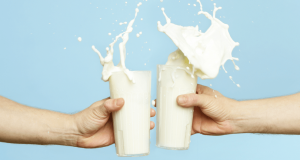Lactose intolerance is the inability to break down a type of natural sugar called lactose. Lactose is commonly found in dairy products, such as milk and yogurt. A person becomes lactose intolerant when his or her small intestine stops making enough of the enzyme lactase to digest and break down the lactose.
Most people are born with enough lactase. Babies need the enzyme in order to digest their mother’s milk. The amount of lactase a person makes may decrease over time. This is because as people age, they eat a more diverse diet and rely less on milk.
Currently, about 75% of the world’s population is lactose intolerant. The risk varies greatly between countries.
There are two main types that cause of Lactose Intolerance:
Primary Lactose Intolerance – Primary lactose intolerance is the most common. It is caused by a decrease in lactase production with age, so that lactose becomes poorly absorbed. This form of lactose intolerance may be partially caused by genes because it’s more common in some populations than others.
Secondary Lactose Intolerance – Secondary lactose intolerance is rare. It is caused by illness, such as a stomach bug or a more serious issue like celiac disease. This is because inflammation in the gut wall can lead to a temporary decline in lactase production.
There’s currently no way to make your body produce more lactose. Treatment for lactose intolerance involves decreasing or completely removing milk products from the diet. Many people who are lactose intolerant can still have up to 1/2 cup of milk without experiencing any symptoms. Lactose-free milk products can also be found in most supermarkets. And not all dairy products contain a lot of lactose. You may still be able to eat some hard cheeses, such as cheddar, Swiss, and Parmesan, or cultured milk products like yogurt. Low-fat or nonfat milk products typically have less lactose as well.
